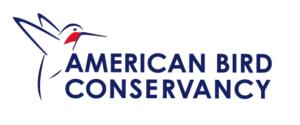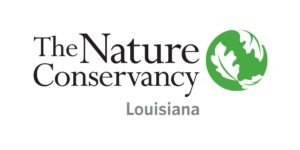Swallow-tailed Kite Project
Download the Swallow-tailed Kite Brochure here (PDF)
The Swallow-tailed Kite experienced a dramatic population decline and reduction in breeding range from 1880 to 1910. The U.S. breeding range, which once spanned 21 states, is now limited to seven states: Texas, Louisiana, Mississippi, Alabama, Florida, Georgia and South Carolina. The current U.S. population size may consist of as few as 6,000 breeding pairs. The Swallow-tailed Kite is a Species of Great Conservation Need in TX, LA and MS. OAS is collecting population data needed to help this species recover.
How you can help kites
The kite conservation brochure has recommendations for landowners, managers and the public.

Kite Rescue
If you find an injured, debilitated or orphaned Swallow-tailed Kite, call (504) 717-3544 and arrange for transportation to our licensed Swallow-tailed Kite rehabilitation facility.

Kite Monitoring
OAS has an ongoing project to locate and monitor sites important to kites including nests, roosts, feeding flock areas, and bathing and drinking sites in Mississippi, Louisiana and Texas. In 2024, we are currently monitoring 14 nests and searching for more. In 2023 we monitored 20 nests and 14 nesting neighborhoods in Louisiana and Mississippi. You can help our monitoring efforts by reporting sightings! See below.
Managing for Kites
We are investigating land management practices that benefit Swallow-tailed Kites. These include studying how kites use working forests (private and industrial), crops and hay fields, and controlled burns.
Tracking Kites
We are tracking individual kites to discover where the important areas are that we need to conserve. Since kites are mostly using private lands, we then reach out to the land owners to encourage voluntary conservation of nest and roost trees, especially because kites will often use the same trees and areas year after year. Other conservation goals which the transmitters help us achieve are to identify migration routes, stopover sites, and wintering grounds used by the northern subspecies. OAS and our partners at the Avian Research and Conservation Institute have captured adult kites and fitted them with extremely light-weight, state-of-the-art GPS-satellite transmitters and GSM-GPS transmitters.
The kites OAS captured and marked most recently are:
Silver Creek – female tagged in 2024, Marion County, MS – Video about her rescue and release
White Bluff – male tagged in 2024, Marion County, MS – Article about the White Bluff Kites 2024
Belle River – female tagged: 2023, St. Martin Parish, LA
Abita Flatwoods – female tagged: 2023, St. Tammany Parish, LA
Read about the Abita Flatwoods kite here: TNC_Abita_Flatwoods_Kites_Article
Ponchitolawa – male tagged: 2019, St. Tammany Parish, LA (died: Oct. 2021)
Bayou Vincent – female tagged: 2018, St. Tammany Parish, LA (died: Oct. 2019)
Hobolochitto -male tagged: 2018, Pearl River County, LA (died: Feb. 2020)
Bayou Paquet – female tagged: 2017, St. Tammany Parish, LA (killed by an owl in 2017)
Bogue Falaya – male tagged: 2017, St. Tammany Parish, LA (transmitter malfunctioned in 2018; most recent sighting: April 30, 2024 in Covington!!)
Lacombe – male tagged: 2015, St. Tammany Parish, LA (died: Mar. 2020)
Strong River – male tagged: 2015, Simpson County, MS (killed by a raptor in 2016)
Crosby – female tagged: 2015, Harris County, TX (killed by an owl in 2015)
Our Partners:
Avian Research and Conservation Institute

International Paper
Barataria-Terrebonne National Estuary Program
Weyerhaeuser
The Coypu Foundation
The McDaniel Charitable Foundation

The Nature Conservancy of Louisiana
Mississippi Museum of Natural Science
Mississippi Department of Wildlife, Fisheries and Parks
Louisiana Department of Wildlife and Fisheries
Southeast Louisiana Refuges, USWFS
Audubon Delta
WE NEED YOUR HELP!
If you are as excited as we are about the kite project and want to help, here are several ways that you can get involved:
1. Report Swallow-tailed Kite sightings (details below).
2. Download the Swallow-tailed Kite conservation brochure (link above).
3. ADOPT-a-KITE: Data retrieval for each tagged kite costs $850.00 per year. You can help continue this project by adopting a kite and sending a check payable to “Orleans Audubon Society” and write “Adopt-a-Kite” on the memo line. Donations of any amount help! Mail the check to: Mary Joe Krieger, OAS Treasurer, 3623 Nashville Avenue, New Orleans, LA 70125.
HAVE YOU SEEN THIS BIRD?
Report sightings of the Swallow-tailed Kite. Sightings of nests, roosts, kites carrying nest material or food, locations where kites are seen regularly, and sightings of more than one kite are of particular interest. Your sightings will help us study and conserve this rare bird of prey.

Information to report:
Date and time of sighting
Location (as specific as possible)
Number of kites observed
Was there anything else of interest (e.g., carrying a snake)?
Your contact information
Report sightings to:
Jennifer Coulson email: OrleansAudubon at aol.com
PUBLICATIONS
Coulson, J.O., S.J. Taft and T.D. Coulson. 2010. Gastrointestinal parasites of the Swallow-tailed Kite (Elanoides forficatus), including a report of lesions associated with the nematode Dispharynx sp. Journal of Raptor Research 44:208–214. Download the paper here: PDF
Coulson, J.O., T.D. Coulson, S.A. DeFrancesch, and T.W. Sherry. 2008. Predators of the Swallow-tailed Kite in southern Louisiana and Mississippi. Journal of Raptor Research 42:1–12. Download the paper here: PDF
Coulson, J. O. 2001. Swallow-tailed Kites carry passerine nests containing nestlings to their own nests. Wilson Bulletin 113:340–342. Download the paper here: PDF
Coulson, J. O. 2002. Mississippi Kites use Swallow-tailed Kite nests. Journal of Raptor Research 36:155–156. Download the paper here: PDF